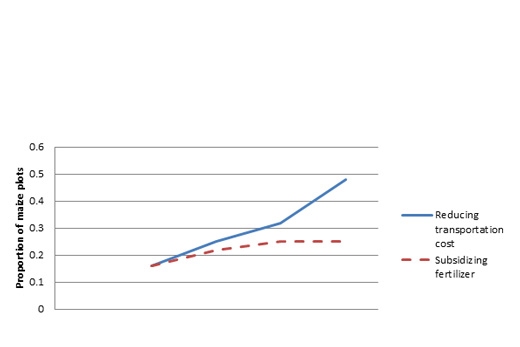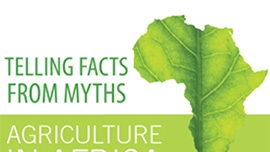SUMMARY
Inorganic fertilizer use is considered low in Africa but it is unclear whether use higher use rates would be profitable. Various studies have explored the yield response of fertilizer use in crop production, but few have explored its profitability. Moreover, most studies that do are outdated, do not account for the endogeneity of the input-use decision, or are based on case studies rather than nationally representative surveys. Using nationally representative data, the research explores the effect of nitrogen application on maize production across major farming systems in Nigeria. Accounting for the endogeneity of applied fertilizer, it focuses on profitability as a possible explanation for observed use rates.
The Analysis
Examining the profitability of fertilizer use involves (a) fertilizer agronomics (yield response) and (b) fertilizer economics (output-to-input price ratio plus quantities and costs of inputs such as seed, chemicals, labor, and transport). The Living Standards Measurement Study–Integrated Surveys on Agriculture provide the necessary information on agricultural practices and input costs at the plot level. This paper applies panel data estimation techniques at the plot level (addressing endogeneity of the input-use decision) to estimate profit-maximizing quantities of inorganic nitrogen for maize production across different agro-ecological and market conditions. It compares these expected optimal rates (adjusted for riskiness of fertilizer use for smallholder farmers) to actual rates of use by maize farmers, assessing whether use is profitable at current prices and, if not, under what circumstances.
Results
- Little extra maize production is expected from adding more nitrogen at the margin; that is, the marginal physical product (MPP) of nitrogen for maize production in Nigeria is quite low.
- The profitability of nitrogen application is marginal for the main cereal-root crop farming system because of the low MPP of nitrogen and high transport costs.
- Reducing transport costs would be more effective than subsidizing the price of fertilizer because the benefits of improved infrastructure and access to fertilizer are more universal. Reducing transport costs by one-half or three-quarters could increase the plots with profitable fertilizer use by about 40% and 65%, respectively.
- Improving the response to nitrogen through complementary practices (such as irrigation facilities and good-quality seed) could help expand fertilizer use for some farmers. Only about 20% of maize producers in the root crop farming system currently use fertilizer even though they represent over 20% of maize plots in the sample. Understanding and improving the likely yield response of applied nitrogen are necessary to expand fertilizer use.
- Observed farmer practices are closer to those of risk-averse farmers, demonstrating the importance of accounting for risk preferences in modern input-profitability considerations.

